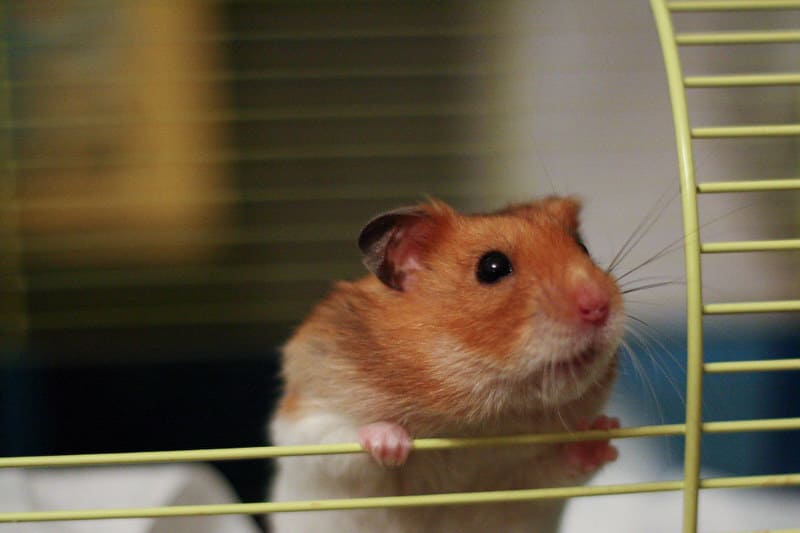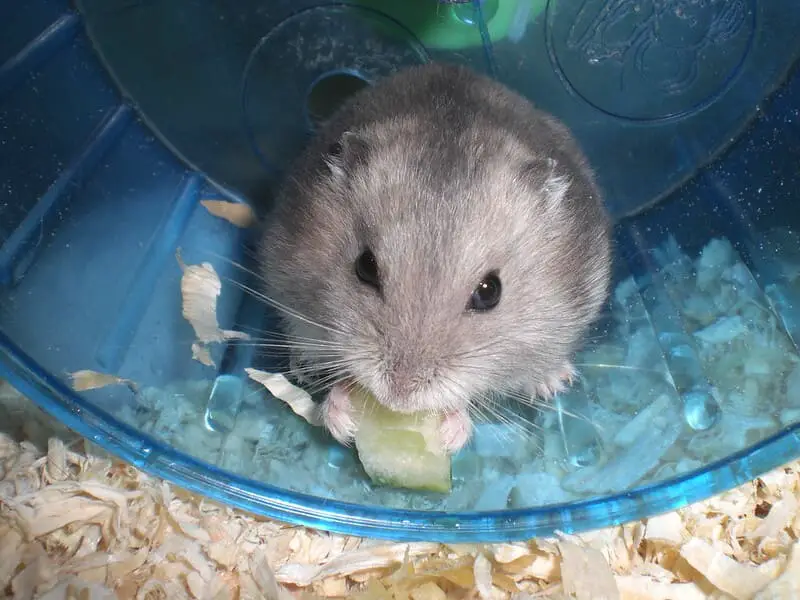Hamsters are endearing and popular pets, cherished for their small size, low maintenance requirements, and charming personalities. While many people choose to house their hamsters in cages, there’s a growing trend towards more open and natural environments for these tiny creatures. This prompts the question: Do hamsters really need a cage? In this comprehensive exploration of the topic, we’ll delve into the pros and cons of hamster cages, alternative housing options, and the factors to consider when deciding how to best care for your hamster.

The Traditional Hamster Cage
Traditional hamster cages have been the go-to choice for many pet owners, and they offer several advantages and disadvantages.
Advantages of Hamster Cages:
1. Safety and Containment
Hamster cages provide a safe and contained environment for your pet. They keep hamsters protected from potential household hazards like electrical wires, household chemicals, and curious pets.
2. Easy Maintenance
Cages are designed for easy cleaning and maintenance. Most come with removable trays or bottom sections for straightforward waste removal, making it convenient to keep your hamster’s living space clean.
3. Accessibility
Cages often have multiple access points, including doors and lids, making it simple for you to interact with your hamster, feed them, and perform routine care tasks.
4. Customization
Cages come in various sizes and designs, allowing you to choose one that suits your space and your hamster’s needs. You can also add accessories like tunnels, wheels, and hideouts to enrich your hamster’s environment.
5. Mobility
Many hamster cages are designed to be portable, allowing you to move your pet to different areas of your home, depending on the time of day or your preferences.
Disadvantages of Hamster Cages:
1. Limited Space
Even the largest hamster cages may not provide as much space as hamsters need to thrive. Hamsters are active creatures that benefit from ample room for exploration and exercise.
2. Lack of Enrichment
Cages can become monotonous if not adequately enriched. Hamsters require mental and physical stimulation, and cages may not offer enough space for a wide variety of toys and activities.
3. Limited Burrowing Opportunities
Many hamsters enjoy burrowing, and standard cages often lack depth for this natural behavior. Hamsters in cages may not be able to express their digging instincts fully.
4. Potential Health Issues
In some cases, hamsters in cages may experience health problems associated with limited space and lack of exercise. Conditions like obesity, stress, and boredom can arise.

Alternative Housing Options for Hamsters
As pet owners become more attuned to the natural needs and behaviors of hamsters, alternative housing options have gained popularity. These options provide more space, greater freedom, and opportunities for a more enriched environment for pet hamsters.
1. Hamster Playpens or Playpens with Lids
Hamster playpens are enclosed spaces that allow your hamster to explore outside their cage. They can be used to provide extra room for play and exercise while still ensuring your hamster’s safety. Some playpens come with lids, preventing your hamster from escaping.
Advantages:
- More space for play and exercise
- Enrichment opportunities
- Safer than letting your hamster roam freely
Disadvantages:
- Not suitable for long-term housing
- Requires supervision to ensure the hamster doesn’t escape
- Limited protection from household hazards
2. DIY Hamster Enclosures
Some hamster owners opt to create custom enclosures that meet their pet’s needs. These enclosures are often larger than standard cages and can be tailored to provide space for natural behaviors like burrowing and climbing.
Advantages:
- Greater customization
- More space for natural behaviors
- Opportunity for creativity in design
Disadvantages:
- Requires time, effort, and resources to build
- Not all DIY enclosures are escape-proof
- May not provide as much protection from household hazards as cages
3. Hamster Terrariums
Hamster terrariums are glass or acrylic enclosures typically used for reptiles or amphibians. They provide a clear and visually appealing environment for hamsters. Terrariums can be customized with substrate, tunnels, and accessories to create a suitable living space.
Advantages:
- Great visibility to observe your hamster
- Customizable to meet your hamster’s needs
- May allow for burrowing and digging
Disadvantages:
- Limited ventilation, which can lead to humidity issues
- Glass or acrylic may be prone to scratching
- Can be more challenging to clean than traditional cages
4. Hamster Tunnels and Modular Systems
Modular hamster housing systems consist of various interconnected components like tunnels, chambers, and pods. These systems can be configured in multiple ways, allowing you to adapt your hamster’s living space to their preferences.
Advantages:
- Highly customizable and expandable
- Provides an enriched environment with numerous hiding spots and tunnels
- Encourages natural behaviors
Disadvantages:
- May be expensive compared to traditional cages
- Can be challenging to clean and maintain
- Some systems may be difficult to secure, posing an escape risk
5. Hamster Bin Cages
Hamster bin cages are large plastic storage containers that are converted into hamster enclosures. They are an affordable alternative to traditional cages and can provide more space for your pet.
Advantages:
- Affordable and easy to find
- Can be customized with various accessories
- Provide more space compared to commercial cages
Disadvantages:
- Limited visibility for observation
- Ventilation may not be as efficient as with traditional cages
- Not as sturdy as glass or metal enclosures
6. Rotastak and Modular Habitats
Rotastak and similar brands offer modular habitat systems that consist of different components that can be connected to create a customized environment for your hamster. These systems often include chambers, tunnels, wheels, and more.
Advantages:
- Customizable and expandable
- Provides numerous hiding spots, tunnels, and exercise options
- Encourages mental and physical stimulation
Disadvantages:
- Can be more expensive than traditional cages
- Some components may be challenging to clean
- Careful assembly and security measures are necessary to prevent escapes
7. Outdoor Hamster Enclosures
For those with suitable outdoor space and climate conditions, outdoor enclosures can provide a more natural environment for hamsters. These enclosures should be escape-proof and protected from predators.
Advantages:
- Allows hamsters to experience natural sunlight and fresh air
- Provides more space for natural behaviors
- Enriching and stimulating for hamsters
Disadvantages:
- Limited to specific geographic locations and weather conditions
- Requires careful predator-proofing
- May not be accessible to all hamster owners

Factors to Consider When Choosing Housing for Your Hamster
When deciding on the best housing for your hamster, consider the following factors:
1. Species and Size
Different hamster species have varying space requirements. Syrian hamsters, for example, are larger and generally need more space than dwarf hamsters. Research the specific needs of your hamster’s species.
2. Natural Behaviors
Hamsters are natural burrowers and climbers. Choose housing that allows them to express these behaviors. Substrate for digging and tunnels for exploration are important considerations.
3. Safety
Ensure that your chosen housing option is escape-proof and protects your hamster from potential household hazards. Consider the materials and features of the enclosure.
4. Enrichment
Provide opportunities for physical and mental stimulation. Hamsters benefit from toys, hideouts, and exercise wheels to keep them engaged and active.
5. Ventilation
A well-ventilated environment is crucial to prevent humidity buildup and respiratory issues. Ensure that your hamster’s enclosure has adequate airflow.
6. Accessibility
Choose housing that allows you easy access for cleaning, feeding, and interacting with your hamster. Consider how easy it is to reach your pet and maintain their environment.
7. Maintenance
Consider the practicality of cleaning and maintaining your chosen housing option. Some enclosures may require more frequent cleaning than others.
8. Aesthetics
While this may be a lower priority, the visual appeal of your hamster’s enclosure can enhance your pet’s living environment and your enjoyment as a pet owner.
9. Budget
Cost is a significant consideration. Some housing options may be more affordable than others, but it’s essential to balance cost with your hamster’s well-being.
10. Time and Effort
Consider the time and effort required for setup, maintenance, and any necessary modifications. Some housing options may demand more time and resources than others.
Conclusion: Tailoring Housing to Your Hamster’s Needs
The question of whether hamsters need a cage doesn’t have a one-size-fits-all answer. The best housing option for your hamster depends on their species, natural behaviors, safety, enrichment needs, and your own preferences and constraints. While traditional cages offer convenience and containment, alternative housing options can provide more space and opportunities for natural behaviors.
As a responsible hamster owner, your primary goal is to create an environment that promotes your pet’s health, happiness, and well-being. This may involve considering alternative housing solutions that cater to your hamster’s specific needs, such as more extensive enclosures, playpens, DIY habitats, or terrariums. Regardless of your choice, regular care, attention, and a safe and enriched living environment are key to ensuring that your hamster enjoys a long and fulfilling life as your beloved companion.
